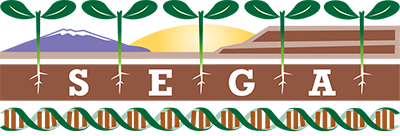You are here
Relative importance of genetic, ontogenetic, induction, and seasonal variation in producing a multivariate defense phenotype in a foundation tree species.
Publication Type:
Journal ArticleSource:
Oecologia, Volume 170, Issue 3, p.695 - 707 (2012)ISBN:
0029-8549URL:
http://www.ncbi.nlm.nih.gov/sites/entrez?Db=pubmed&DbFrom=pubmed&Cmd=Link&LinkName=pubmed_pubmed&LinkReadableName=Related%20Articles&IdsFromResult=22652923&ordinalpos=3&itool=EntrezSystem2.PEntrez.Pubmed.Pubmed_ResultsPanel.Pubmed_RVDocSumhttp://www.ncbi.Keywords:
Animals, Biological Evolution, Chimera, Coleoptera, Genetic Variation, Herbivory, Larva, Multivariate Analysis, Phenotype, Plant Leaves, Populus, Seasons, TreesAbstract:
<p>Plant adaptations for defense against herbivory vary both among species and among genotypes. Moreover, numerous forms of within-plant variation in defense, including ontogeny, induction, and seasonal gradients, allow plants to avoid expending resources on defense when herbivores are absent. We used an 18-year-old cottonwood common garden composed of Populus fremontii, Populus angustifolia, and their naturally occurring F(1) hybrids (collectively referred to as "cross types") to quantify and compare the relative influences of three hierarchical levels of variation (between cross types, among genotypes, and within individual genotypes) on univariate and multivariate phytochemical defense traits. Within genotypes, we evaluated ontogeny, induction (following cottonwood leaf beetle herbivory), and seasonal variation. We compared the effect sizes of each of these sources of variation on the plant defense phenotype. Three major patterns emerged. First, we observed significant differences in concentrations of defense phytochemicals among cross types, and/or among genotypes within cross types. Second, we found significant genetic variation for within-plant differences in phytochemical defenses: (a) based on ontogeny, levels of constitutive phenolic glycosides were nearly three times greater in the mature zone than in the juvenile zone within one cottonwood cross type, but did not significantly differ within another cross type; (b) induced levels of condensed tannins increased up to 65 % following herbivore damage within one cottonwood cross type, but were not significantly altered in another cross type; and (c) concentrations of condensed tannins tended to increase across the season, but did not do so across all cross types. Third, our estimates of effect size demonstrate that the magnitude of within-plant variation in a phytochemical defense can rival the magnitude of differences in defense among genotypes and/or cross types. We conclude that, in cottonwood and likely other plant species, multiple forms of within-individual variation have the potential to substantially influence ecological and evolutionary processes.</p>
- Log in to post comments
- Google Scholar
- RTF
- EndNote XML
- RIS
Theme by Danetsoft and Danang Probo Sayekti inspired by Maksimer
